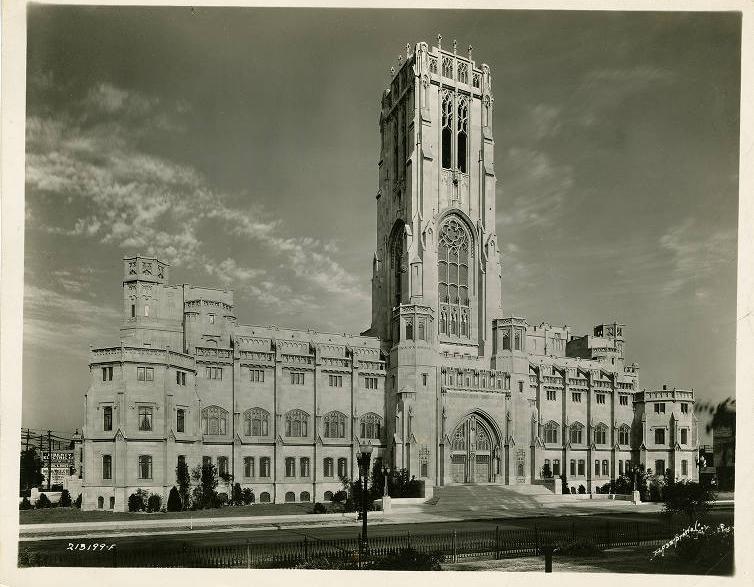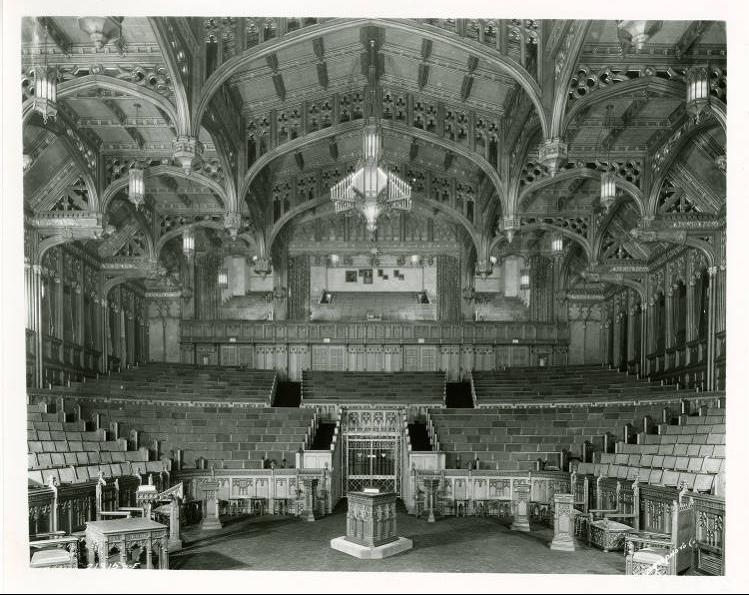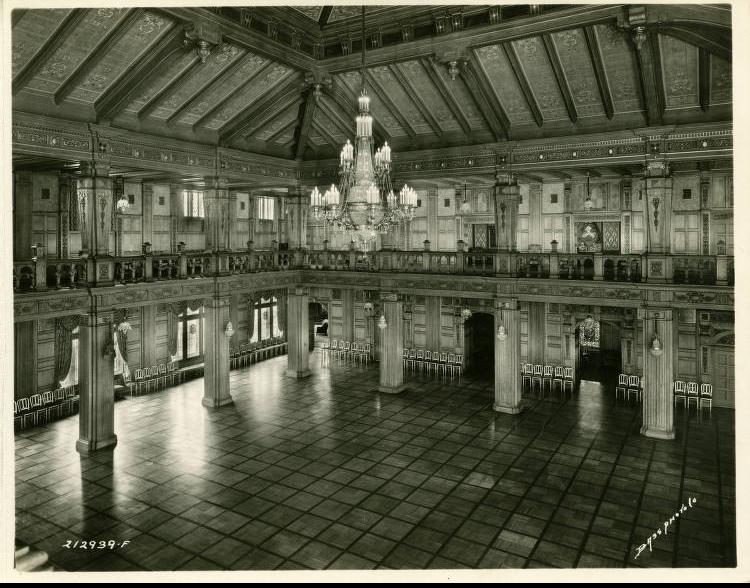The Scottish Rite Cathedral is the headquarters for the Scottish Rite Valley of Indianapolis, a Masonic organization. The structure, the largest Scottish Rite cathedral in the world, faces the green space on the northern end of the .

Designed by architect-member George F. Schreiber in 1926—a time of major membership growth for the organization—Scottish Rite Cathedral was completed in 1929 at a cost of $2.5 million. The Matthews Brothers Stone Company in Bloomington filled 120 semitrailer trucks with the cut and carved limestone used to construct the building.
Schreiber, who was a Mason, laid out the entire building in either measurements of 33 or multiples of 33 feet, symbolizing the 33 years of Christ’s life. The building is 330 feet long and 120 feet wide. As Masons trace their heritage to guild organizations of stoneworkers who built the cathedrals of Europe, Schreiber laid out a nave, crossing tower, and choir, which refer to English examples of the architectural form and harken back to the organization’s origins.

The most spectacular exterior feature is the Gothic tower that rises 212 feet above the sidewalk level on the front of the cathedral and which houses a carillon of 54 bells, one of the largest carillons in the United States. All structures but the tower pay deference to the World War Memorial.
The Tiler’s room (a Master Mason who traditionally guarded the door of Masonic meeting halls) serves as the main entrance of the building. Upon entering, one finds a polished marble floor set with a bronze centerpiece depicting the signs of the Zodiac and the emblems of four principal degrees of the Scottish Rite. The chandelier overhead is cast bronze, centered in a room that is a perfect 33-foot cube. The main lobby, 66 feet square, also has a marble floor with walls and beams of white oak. The ceiling is hand-painted plaster. For most of the building’s history, the Tiler’s Room was the only portion of the cathedral that was open to the public. The working offices and the Lodge of Perfection room, where members attend the Masonic rituals of ascending in rank from the 4th to the 14th degrees, are north of the lobby. (Each degree represents a year in Christ’s life, 33 degrees being the highest level a Mason can attain.)

A lounge, 99 feet long, is to the south. A library adjacent to the lounge is an octagon 33 feet in diameter, walled with white oak bookcases. West of the lobby is a grand staircase, 33 feet wide, leading up to the ballroom and down to the dining hall. The eight art glass windows on the east wall are dedicated to medicine, law, music, painting, sculpture, electricity, engineering, and education, while those on the west wall represent several degrees of the Scottish Rite.
On the second floor is a ballroom, famous for its “floating floor” that is laid on springs and felt for resilience. It is two stories high, with a balcony running around three sides. A central crystal chandelier, suspended on a winch for lowering, has 187 incandescent bulbs and weighs 2,500 pounds. The ballroom was featured in Eight Men Out, a 1988 film based on the Major Baseball League Black Sox Scandal, which took place during the 1919 World Series.

At the north end of the second floor is an auditorium with 1,100 permanent seats and an arena 33 feet square. The walls are paneled with curly Russian white oak, with a vaulted, double hammer-beamed ceiling.
The Scottish Rite Cathedral is the only Scottish Rite Valley meeting hall in the nation to have an orchestra in residence. conductor, , a 33rd degree Mason, founded the Scottish Rite Orchestra in 1946.
Scottish Rite Cathedral was listed on the National Register of Historic Places in 1983 and underwent massive renovation and restoration in 1995. The building also is used as a venue for weddings, theatrical performances, and other events.
It has played host to the awards program, the NFL Alumni Association Player of the Year Awards, and Indianapolis Symphony Orchestra classical Christmas concerts.
Scottish Rite Cathedral is open Tuesday through Friday for tours, and guests may visit the cathedral’s Double Eagle Cafe, named for the ancient symbol that Scottish Rite Masons use as their emblem. It is one of three major Masonic historic landmarks in Indianapolis that include Indiana Freemasons Hall and , originally known as Murat Temple.

Help improve this entry
Contribute information, offer corrections, suggest images.
You can also recommend new entries related to this topic.